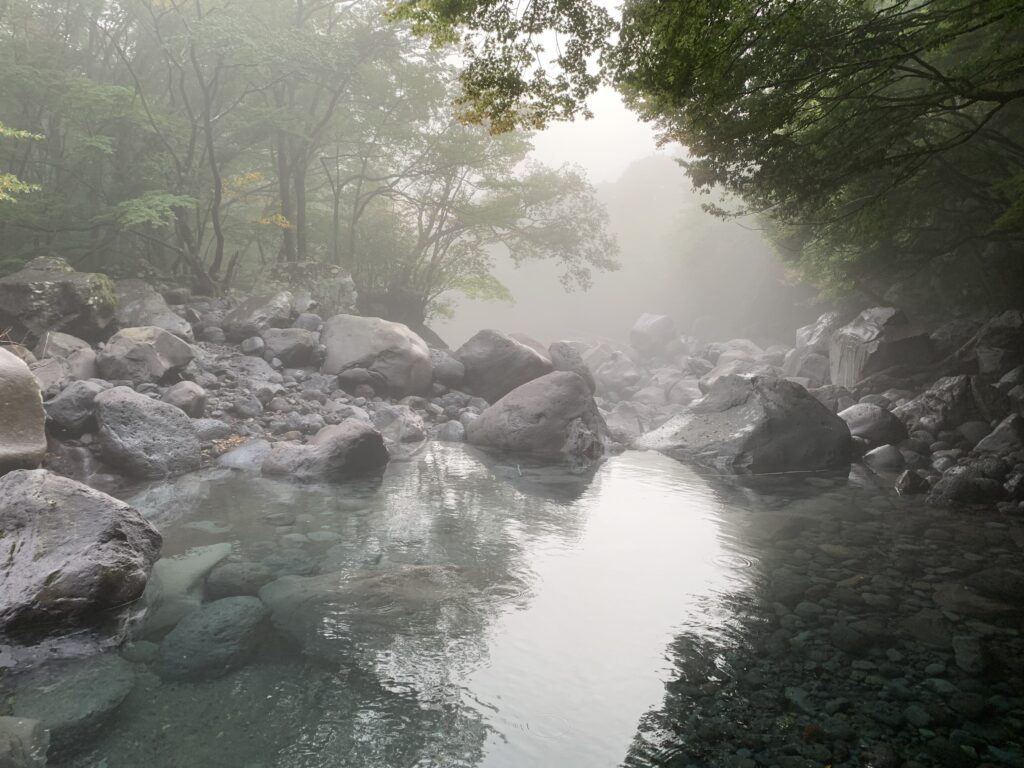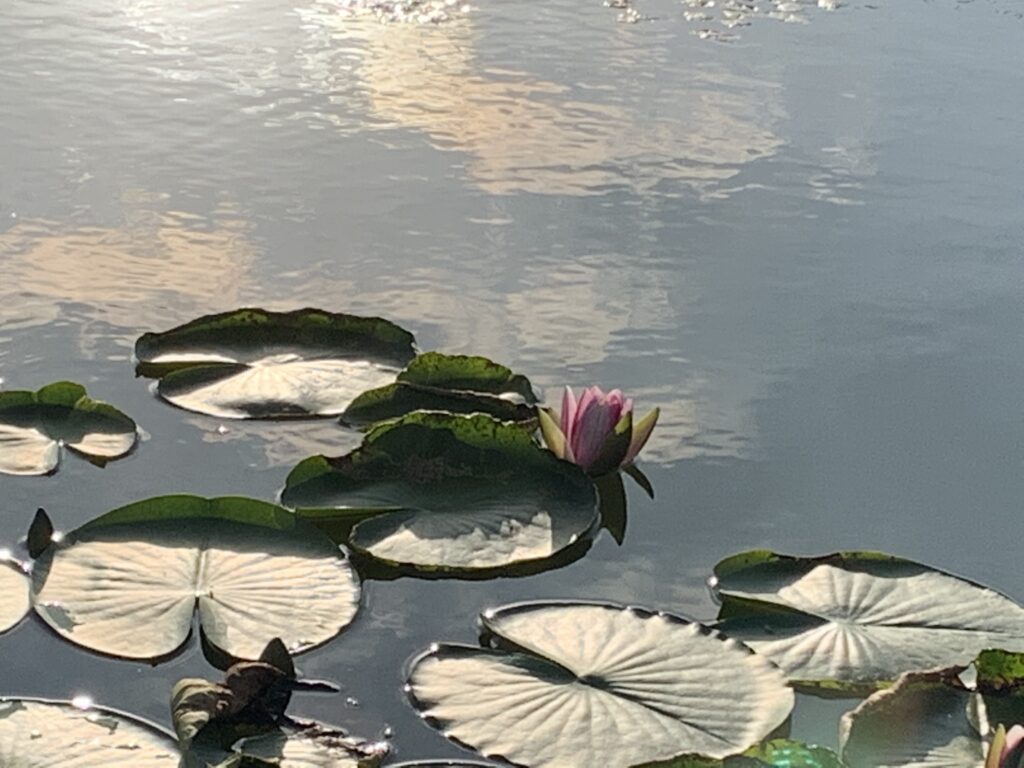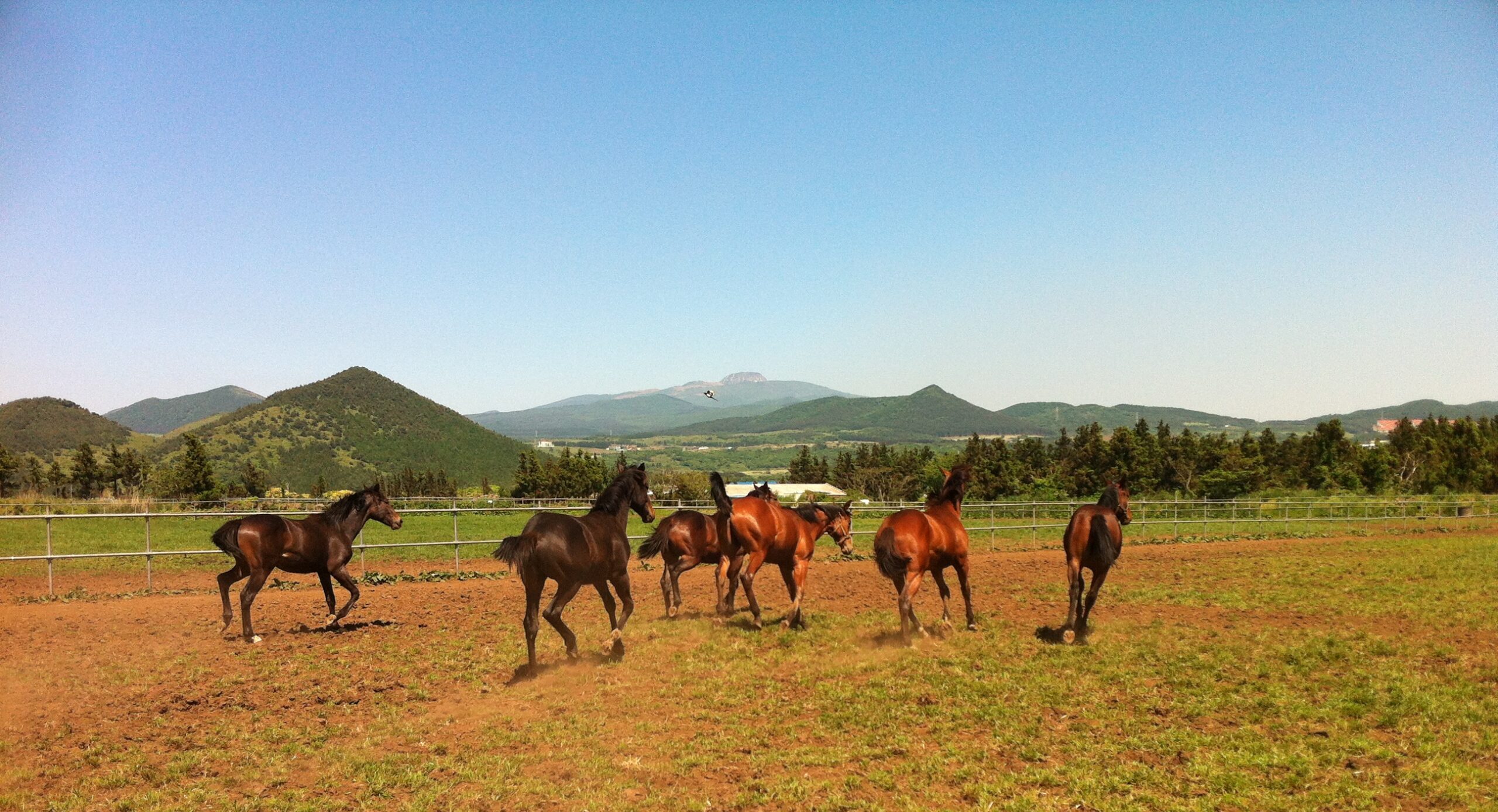Jangheung Gossi Gaseung : 장흥고씨가승 : 長興髙氏家乘
This text was written in 1450 and included in the Dongmunseon (동문선 : 東文選), an anthology of poems and other writings that was produced under the orders of King Seong-Jong (성종 : 成宗) in 1478. Korean families trace their lineage back to an overall founding clan member, and are divided into family clan branches called bongwan (본관 : 本貫) depending on the hometown of that branch’s first ancestor. Jangheung (장흥 : 長興) is the name of a large administrative district called a gun (군 : 郡) in South Jeolla Province (Jeollanam-do : 전라남도). Although the Go clan is native to Jeju, a descendant of the clan eventually settled in Jangheung and his descendants remained there. Hence Jangheung Gossi means Branch of the Go Family Tree from Jangheung, or Jangheung Go Family. A gaseung (가승 : 家乘) is a book is that records the history of a family, with a focus placed on its direct ancestors.
The Jangheung Gossi Gaseung was written by Go Deuk-Jong (고득종 : 高得宗), a native of Jeju (1388 – 1452). He passed the state civil service examination in 1414 and served as a government official in a variety of roles. In 1438 he traveled to Ming dynasty China as an ambassador of the royal court (gwanapsa : 관압사 : 管押使), and in 1439 the king sent him to Japan to act as his ambassador (tongsinsa : 통신사 : 通信使); he spent over a year there. He assisted King Sejong in bringing Jeju under the administration of the newly formed kingdom of Joseon, founded in 1392. There is a memorial stone in his honor (chumodanbi : 추모단비 : 追慕壇碑) at Dang Peak (Dangak : 당악 : 唐岳) in Donggwang Village (Donggwang-ri : 동광리).
Go Deuk-Jong had already asked Jeong I-Oh (정이오 : 鄭以吾), a government official from Jinju (진주 : 晋州) on the Korean peninsula, to make a record of the history of the Go clan in 1416. That text is called the Seongju Gossii Gajeon (성주고씨가전 : 星主高氏家傳). There is no known record of why Go Deuk-Jong decided to write a new history of his family by himself later on. Professor Jin Yeong-il argues that “He was dissatisfied with (the Seongju Gossii Gajeon) in which the birth of three godlike persons, their marriage with three women, and the residences of three families were omitted.”
My translation is based on 진영일 (Jin Yeong-il)’s translation of the original text into modern Korean in his paper entitled 조선시기 제주 神人 기사 검토 (A Study of Stories about the Three Divine Men of Jeju from the Early Joseon Dynasty), published in 2006 in Volume 28 of Jeju National University’s Tamla Munhwa (탐라문화) journal, with reference to the original. I checked the original text in Jin Yeong-il’s paper against 현용준 (Hyun Yong-jun)’s paper entitled 三姓神話硏究 (삼성신화연구 : A Study of the Myth of the Three Clans), published in 1983 in Volume 2 of Jeju National University’s Tamla Munhwa (탐라문화) journal.
The original text below is taken from Jin Yeong-il’s paper. He quoted it from page 222 of Hyun Yong-jun (현용준)’s book entitled 巫俗神話와 文獻神話 (무속신화와 문헌신화 : Shamanic Myths and Literary Myths), published in 1992 by 集文堂 (집문당).
All footnotes are mine, and in addition to Jin Yeong-il and Hyun Yong-jun’s papers I relied on the following sources:
– The National Institute of Korean Languages’s online unabridged dictionary of standard Korean : 국립국어원 표준국어대사전
– Naver’s online dictionary : 네이버 사전
– The 디지털제주문화대전 (Digital Encyclopedia of Jeju Culture)
– The Academy of Korean Studies’ online Encyclopedia of Korean Culture : 한국학중앙연구원 한국민족문화대백과사전
– The 성씨정보 www.surname.info website
– 고씨대관 – published by the 고씨중앙종문회 in 2003 – 고득종’s biography is included in the section available for download at the 제주학연구센터‘s website

Jangheung Gossi Gaseung : 장흥고씨가승 : 長興髙氏家乘 : History of the Go Family of Jangheung
瀛州太初無人物 忽有三神人 從地中湧出 于漢拏山北麓 據壙壤品字之 穴名曰慕興穴 三人之出 正當九韓時 長曰高乙那 次曰良乙那 三曰夫乙那 狀貌甚偉 器度寬豁 絶無人世之態也 皮衣肉食 常以遊獵爲事 不成家業矣
There were at first no people in Yeongju. Three demi-gods suddenly soared out of the ground one day. There are three holes in the ground in the shape of the character 品 at Gwangyang on the north slope of Halla Mountain. This place is called Moheunghyeol. The three men emerged during the time of the Nine Han nations. The eldest of the three was Go Eulla, the second was Yang Eulla, and the third was Bu Eulla. They were very tall and magnanimous in character. But the island did not yet have the appearance of a place inhabited by people. The three men wore clothing made from animal skins and ate meat, spending their days hunting. They were unable to begin families.
一日登漢拏山 望見紫泥封大函 自東海中浮來 欲留而不去 三相謂曰異哉彼物也 降臨就開則 內有玉函形如 坼其封隱然 羅衣淑女三人 皆年十五六 容姿脫俗 氣像竊窕 各修飾而坐 且持駒犢五穀之種 出置金塘之岸 卽今朝天館下浦是也 三神人自賀曰是天必授我三人也
One day the three men climbed Halla Mountain and looked far off into the distance, where they saw a large wooden chest sealed with purple clay floating in towards the island from the ocean to the east. The chest came to rest along the coast and the three men said to each other “That is truly a strange object!” When they went down and opened it they found a jade chest in the shape of a bird’s egg. They opened the sealed object and found three elegant women dressed in silk clothing. They were all 15 or 16 years old, extraordinarily beautiful and graceful in manner. The women were attractively adorned and sitting down. They had calves and foals with them, along the seeds of five grain crops. These they all placed down on a hill next to the pond called Geumdang, which is today the harbor below Jocheongwan. The three men celebrated their good fortune, saying “Surely this is a gift from the heavens.”
語畢 鳥巾紅帶靑衣使者 亦從函中而出 稽首再拜曰 我是東海上碧浪國使也 吾王生此三女 年俱 壯長 而求不得所耦 嘗欲遺與者 歲餘頃者 吾王登紫霄閣 望氣于西溟則 紫氣連空 瑞色葱朧 中有絶岳 湧出三神人 將欲開國而無各無配匹也 因此命 臣侍三女而送 願用伉儷之禮以成大業已 而忽然乘雲而去 莫知所之
Just then, a messenger also came out of the wooden box, wearing blue clothing with a red belt and a headpiece made of crow feathers. He bowed his head and performed two full-prostration bows. “I come from the nation of Byeok-Rang in the Eastern Sea. The king of our nation had three daughters. They have now come of age but he was unable to find husbands for them, despite his best efforts. He recently went up to Jasogak and saw an energy rising up from the sea far to the west. The purple light rose up to the sky, where it became a most auspicious color of the purest blue. He saw a mountain with a flat peak in its midst, from which three men emerged. “These men intend to found a great nation but they have no wives,” said the king. So he ordered me to accompany his three daughters here and ask you to peform a proper wedding ceremony and achieve great deeds. The messenger then suddenly flew away on a cloud; where he went, nobody knows.
三人卽以潔牲告天 以年次分娶之 就泉甘土肥處 射矢卜地 高乙那所居曰第一都 漢拏北一徒里 良乙那所居曰第二都 漢拏右翼之南山方里 夫乙那所居 曰第三都 漢拏左翼之南土山里 自玆以後 始成産業 植播五穀種 且牧駒犢 日就富庶 遂成人境
The three men prepared clean sacrificial animals, offered thanks and prayers to the heavens, and married the women by order of age. The place where Go Eulla settled was called First Village, and it is to the north of Halla Mountain at Ildo Village. Yang Eulla made his home to the south and right of Halla Mountain in present-day Sanbang Village; it was called Second Village. Bu Eulla lived to the south and left of Halla Mountain in what is today Tosan Village. It was called Third Village. They planted the seeds of the grain crops, raised horses and cows, and practiced commerce. Day by day they became more wealthy. From that time on, they lived as civilized people.
盖九百之後 三人各射石以試勇力 高爲上 良爲中 夫爲下 故民心並歸于高氏 以高爲君長 以良爲臣 以夫爲民 而國號乇牟 以其牟 穀茂盛故也
About 900 years later the three men shot arrows at stones to test each other’s power. Go was the strongest, Yang was next, and Bu was the least powerful of the three. So all the people of the island put their support behind the Go clan, and the Go family was chosen as their leaders. The Yang clan became their vassals, and the Bu clan became the commonfolk. The nation was named Tak-Mo because of the prevalence of barley on the island.

Arrows shot at stones
There are two stones in the neighborhood of Hwabuk (화북동) in Jeju City that are called the Samsaseok (삼사석 : 三射石), meaning Stones Shot by Three Arrows, but are also known as the Sisaseok (시사석 : 矢射石), meaning Stones Shot by Arrows. The site is also called Salssondiwat (살쏜디왓) in Jeju dialect, where sal (살) means arrow, (쏜) means shot, di (디) means place and wat (왓) means field (밭 : bat in standard Korean). The stones are about 55 cm in diameter and are made of basalt. The memorial stone at the site was installed under the orders of governor (moksa : 목사) Kim Jeong (김정) in 1735, but the engraving became illegible and was restored in 1840. The stone housing that now holds the Samsaseok was built in 1813 by a native of Jeju named Yang Jong-Chang (양종창 : 梁宗昌).
Barley : 보리 : 牟穀
Blue : 푸를 청 : 靑
The color spoken of here, represented by the Chinese character cheong (푸를 청 : 靑) and called pureuda (푸르다) in pure Korean, can mean what we call blue (parata : 파랗다) in English, as Koreans call the color of the sky, but it can also mean what in English is called green (chorotbit : 초록빛), as grass is also referred to as this color. Dictionaries list azure as another possible translation.
Byeok-Rang nation : 벽랑국 : 碧浪國
This is thought to be an imaginary nation. The characters in the name are byeok (푸를 벽 : 碧), meaning blue; rang or nang (물결 랑/낭 : 浪), meaning waves; and guk (나라 국 : 國), meaning country or nation. Modern Koreans pronounce the name as Byeong-Nang.
Eulla : 을나 : 乙那
The characters in this term are eul (새 을 : 乙), meaning bird, and na (어찌 나 : 那), meaning how or what. Chinese characters were used in the past to write Korean, and proper nouns were represented by characters with similar pronunciation. Opinions differ on what this term referred to.
Full-prostration bows : jaebae : 재배 : 再拜
Geumdang : 금당 : 金塘
Some versions of the myth of the founding of Tamna state that Geumdang is located on the coast of Jocheon-ri (조천리 : 朝天里) The characters in this name are 金 (쇠 금 : geum) meaning metal, gold or precious, and 塘 (못 당 : dang), meaning pond (못, 연못), dike (방죽), or embankment (둑, 제방).
Go, Yang, Bu : 고 : 高, 양 : 良, 부 : 夫
These three family names are still prevalent in Jeju today, and clan representatives perform ceremonies honoring their ancestors at Samseonghyeol (삼성혈 : 三姓穴) twice a year. The Chinese character for the Yang clan was later changed to 梁.
Gwangyang : 광양 : 壙壤
Halla Mountain : Hallasan : 한라산 : 漢拏山
The term used in the text is jinsan (진산 : 鎭山), which refers to a large mountain that stands behind a town, province or nation and brings it peace and security (진호하다 : 鎭護하다). The term comes from the practice of geomancy, and these mountains are also known as jusan (주산 : 主山). In the case of Jeju, the jinsan is understood to be Halla Mountain.
Ildo Village : Ildo-ri : 일도리 : 一徒里
Jasogak : 자소각 : 紫霄閣
It is unclear what this term means. The first character, ja (紫), means purple, violet or amethyst, the second character, so (霄), means sky, clouds, mist or night, while the third character, gak (閣), means chamber, pavilion or cabinet.
Jocheongwan : 조천관 : 朝天館
Leader : gunjang : 군장 : 君長
Moheunghyeol : 모흥혈 : 慕興穴
This is written as 毛興穴 in other versions of the Yeongjuji. Mohyeonghyeol is located in Jeju City and is known today as Samseonghyeol (삼성혈 : 三姓穴). There are three holes in the ground at the site from which the three founding ancestors of Jeju are said to have emerged. Ceremonies honoring these ancestors are held twice a year at the site. The character here translated as cave is 穴 (hyeol : 구멍 혈), which can mean hole (구멍), cave (굴 or 동굴), pit or crater (구덩이), dugout hut or pit-dwelling (움집), grave (무덤 or 묘혈), vein (of metal ore, etc) (광맥), or locus of vital earth energy (hyeol : 혈).
Nine Han nations : Guhan : 구한 : 九韓
This term is believed to have referred to nine neighboring nations of the Silla kingdom (신라 : 57 BCE to 935). The nine are Japan, China, Oweol (오월 : 吳越), Takra or Tangna (탁라 : 托羅), Eungyu (응유 : 鷹遊), Malgal (말갈 : 靺鞨), Danguk (단국 : 丹國), Yeojeok (여적 : 女狄), and Yemaek (예맥 : 濊貊).
Purple : ja : 자주빛 자 : 紫
Dictionaries list purple, violet and amethyst as meanings of this character.
Red belt and a headpiece made of crow feathers
The description given is 烏巾紅帶 (오건홍대).
Sanbang Village : Sanbang-ri : 산방리 : 山方里
Three villages
These three settlements are called Jeildo (제일도 : 第一都), Jeido (제이도 : 第二都) and Jesamdo (제삼도 : 第三都). The term here translated as village is do (도읍 도 : 都) which can mean capital, city, country, village, fortress or pond.
Tak-Mo : 탁모 : 乇牟
The character 乇 (잎 탁: tak) has the meaning of leaf/leaves of a plant. 牟 (보리 모 : mo) means barley.
Three Demi-gods
The term used to describe these men is sinin (신인 : 神人), which could also be translated as divine man or god-man. The Korean names of these men in hangeul and hanja are as follows: Go Eulla (고을나 : 高乙那), Yang Eulla (양을나 : 良乙那), Bu Eulla (부을나 : 夫乙那). Eulla follows the pronunciation of the two Chinese characters as they are found in combination. They are sometimes transliterated as Eul-na, in accordance with the separate pronunciation of the two characters, eul (乙 : 을) and na (or ra) (那 : 나/라).
Tosan Village : Tosan-ri : 토산리 : 土山里
Vassals : sin : 신 : 臣
The character used here to describe the position of the Yang family, 臣 (신하 신 : sin) means vassal, liege, retainer (신하), servant (하인), or common people (백성).
Yeongju : 영주 : 瀛州
This is one of the former names of Jeju Island. Yeong (바다 영 : 瀛) can mean ocean, marsh, or island where sinseon live. Sinseon (신선 : 神仙) are immortal celestial beings in the mythology of Taoism. Ju (고을 주 : 州) can mean town, country, nation, island, village, live together or gather together.


1 thought on “History of the Go Family of Jangheung”